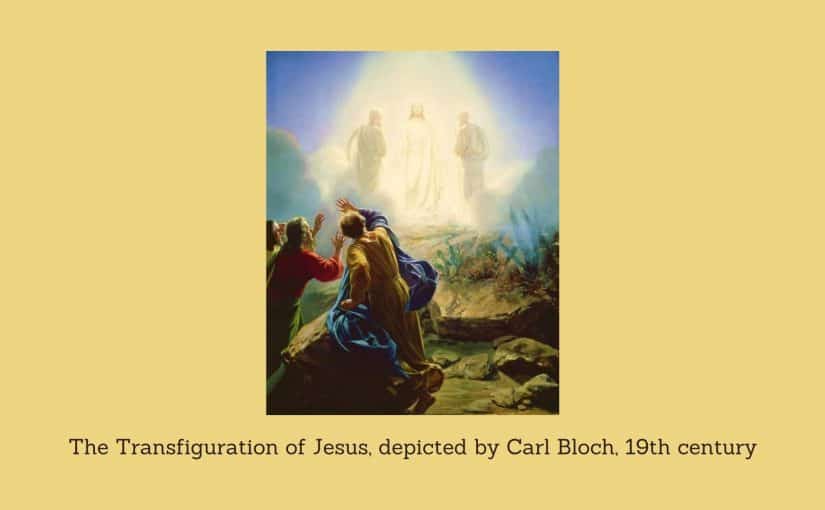Repeatedly, God took steps to identify His Son so people would know who He was and is. While some of these were not public announcements or pronouncements initially, all of them became public by virtue of appearing in God’s Word, the Bible.
-
-
- Old Testament prophecies foretold His coming, and many of them were very quite specific. See “Bank on it” in this article.
- John the Baptist, even before he was born, signaled that Jesus was God’s Son. When Mary, who was pregnant with Jesus, greeted Elizabeth, who in her old age was pregnant with John the Baptist, “the baby leaped in her womb, and Elizabeth was filled with the Holy Spirit” (v. 41). Elizabeth told Mary, “when the sound of your greeting reached my ears, the baby leaped in my womb for joy” (v. 44).
- Both Simeon and Anna knew who Jesus was, for God had revealed this information to them.
- The Wise Men knew who Jesus was at least in a significant way, because they followed a star that “went on ahead of them until it came to a stop over the place where the Child was to be found” (Matt. 2:9). Also, “after they came into the house [the star had identified], they saw the Child with His mother Mary; and they fell down and worshiped Him. Then they opened their treasures and presented to Him gifts of gold, frankincense, and myrrh” (v. 11).
- Years later, as a grown man, John the Baptist identified Jesus this way: He “saw Jesus coming to him, and said, “Behold, the Lamb of God who takes away the sin of the world!” (John 1:29).
- After Jesus was baptized by John, He “came up immediately from the water; and behold, the heavens were opened, and he saw the Spirit of God descending as a dove and settling on Him, and behold, a voice from the heavens said, ‘This is My beloved Son, with whom I am well pleased’ ” (Matt. 3:16-17).
- Jesus Himself spoke with clarity about who He was to all who were open to Him and His teachings.
- When Jesus was transfigured in the presence of Peter, James, and John, He appeared “the appearance of His face became different, and His clothing became white and gleaming. And behold, two men were talking with Him; and they were Moses and Elijah” (Luke 9:29-30). The disciples were obviously overcome, and Peter suggested building “three tabernacles,” one apiece. Peter hadn’t known what to say, and the disciples grew afraid. At that point “a cloud formed, overshadowing them, and a voice came out of the cloud: ‘This is My beloved Son; listen to Him!’ And suddenly they looked around and saw no one with them anymore, except Jesus alone” (Mark 9:7-8).
- After Jesus was executed on the cross, “the veil of the temple was torn in two from top to bottom. And when the centurion, who was standing right in front of Him [when Jesus died]…said, “Truly this man was the Son of God!” (Mark 15:38-39).
- God raised His Son Jesus from the dead, and He first revealed that He had brought Him back to life to the female followers of Jesus who made their way to the tomb early on Sunday morning following Jesus’ death and burial on Friday.
- In His sermon at Pentecost, Peter declared, “Therefore let all the house of Israel know for certain that God has made Him both Lord and Christ—this Jesus whom you crucified” (Acts 2:36).
- Peter stressed Jesus’ identity yet again in his second sermon at the time of Pentecost (see Acts 3:17-26).
- Peter and John stood before the civil and religious authorities attributed the healing of a man “who had been unable to walk from birth” to none other than Jesus Christ. Mark it down. Peter and John were careful to fully identify Jesus for their audience.
- After meeting Jesus on the road to Damascus and becoming His follower, Saul “immediately he began to proclaim Jesus in the synagogues, saying, ‘He is the Son of God.’ All those hearing him continued to be amazed, and were saying, ‘Is this not the one who in Jerusalem destroyed those who called on this name, and had come here for the purpose of bringing them bound before the chief priests?’ But Saul kept increasing in strength and confounding Jews who lived in Damascus by proving that this Jesus is the Christ” (Acts 9:20-22).
- Paul even told an audience in Athens where a monument had been erected “to and Unknown God” that God previously had “overlooked the times of ignorance” but is “now proclaiming to mankind that all people everywhere are to repent, because He has set a day on which He will judge the world in righteousness through a Man whom He has appointed, having furnished proof to all people by raising Him from the dead” (Acts 17:30-31).
- The apostle John would identify Jesus clearly at the very beginning of his first epistle, in what we now know as 1 John 1.
- The apostle John saw Jesus identified as “the Lion that is from the tribe of Judah, the Root of David, [who] has overcome so as to be able to open the scroll and its seven seals” in Revelation 5.
-
This page is part of a Bible study at Discover Bedrock Truth.
Unless otherwise indicated, Scripture passages have been taken from the NEW AMERICAN STANDARD BIBLE®, Copyright © 1960, 1962, 1963, 1968, 1971, 1972, 1973, 1975, 1977, 1995 by The Lockman Foundation. Used by permission.
Copyright © 2021 by B. Nathaniel Sullivan. All rights reserved.
